Abstract
The fluorescent-antibody technique was used to identify cells and spores of Bacillus subtilis and cells of B. circulans from soil. From cells grown in three broth media of different nutrient status, i.e., a cold extracted soil medium (CSE), an unamended autoclaved soil extract (HSE), and nutrient broth (NB), antisera were produced with both quantitative and qualitative differences in antibody content. The specificities of antisera to two strains of each of the Bacillus species were determined. Antisera for B. subtilis O antigens were species-specific and showed no cross-reactions, whereas those for the B. circulans O antigens were strain-specific and in some cases showed cross-reactions with B. alvei. This cross-reaction was removed by absorption of the antiserum with B. alvei O antigen. Fluorescein isothiocyanate γ-globulin conjugates prepared from these antisera showed the same specificity reactions. A method for staining bacteria on soil particles was developed, by use of small staining troughs. By mounting stained soil particles on slides and irradiating them with transmitted and incident ultraviolet blue light, bacteria on both mineral and organic particles, taken directly from soil, could be observed. Fluorescent antibodies against cells grown in CSE gave brighter fluorescence of stained bacteria on soil particles than did fluorescent antibodies against cells grown in either HSE or NB. Colonies of both Bacillus species were generally small and localized. Spore antisera, though not rigorously tested for specificity, were used to identify spores of B. subtilis on soil particles. The uses and implications of the technique in soil bacteriology are discussed.
Full text
PDF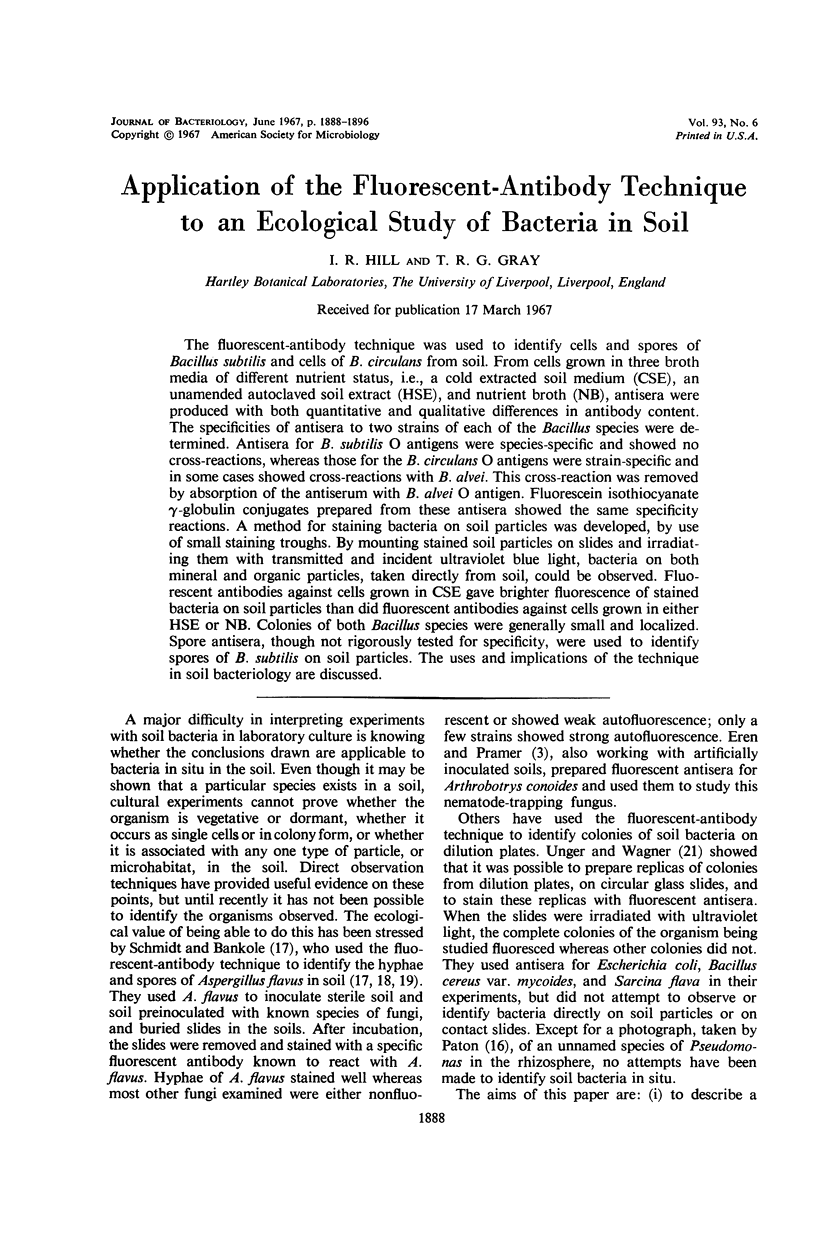
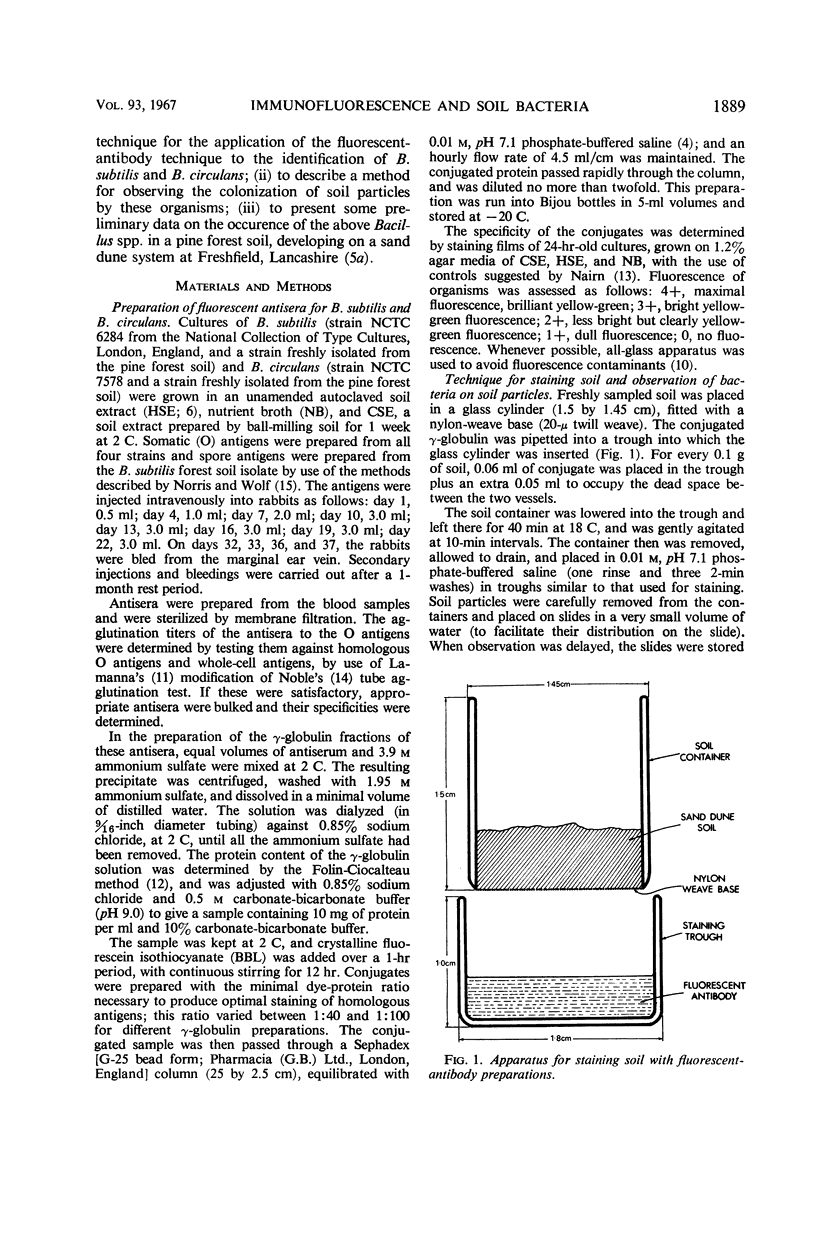
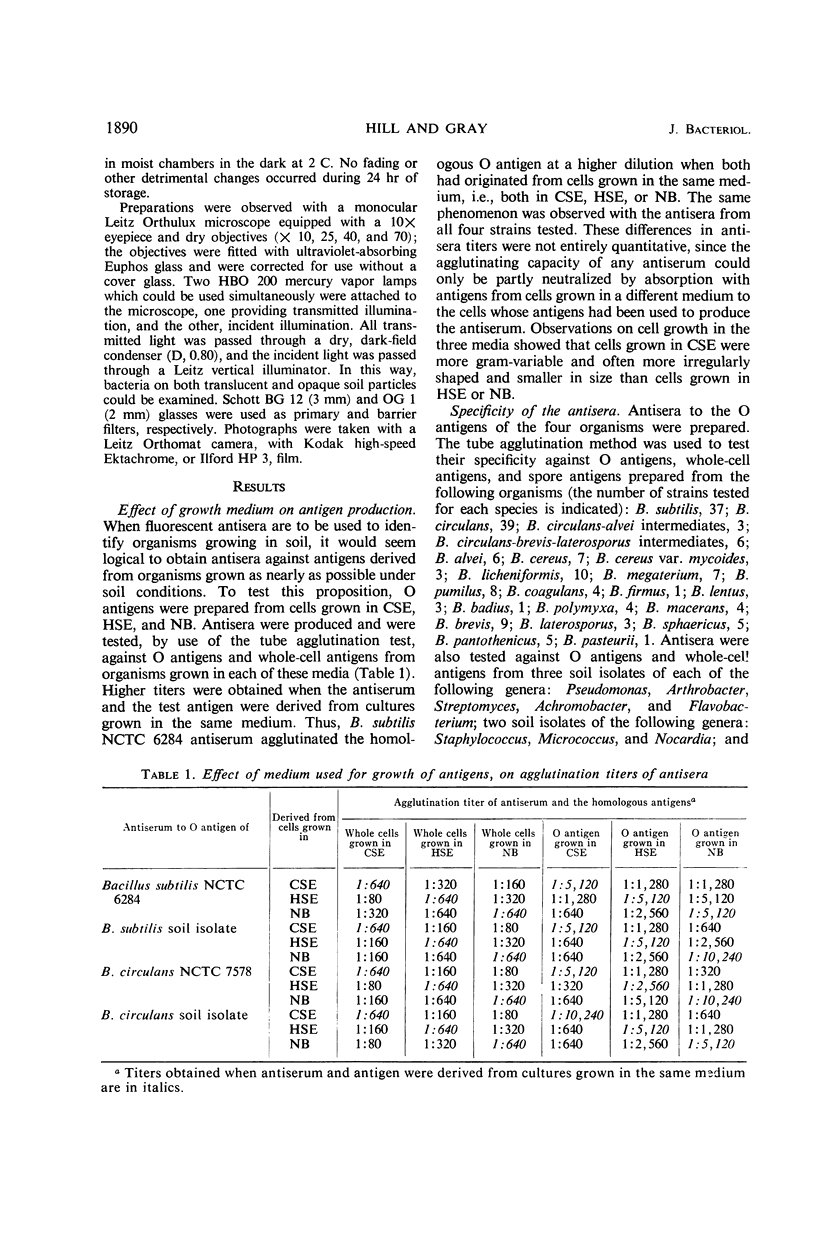
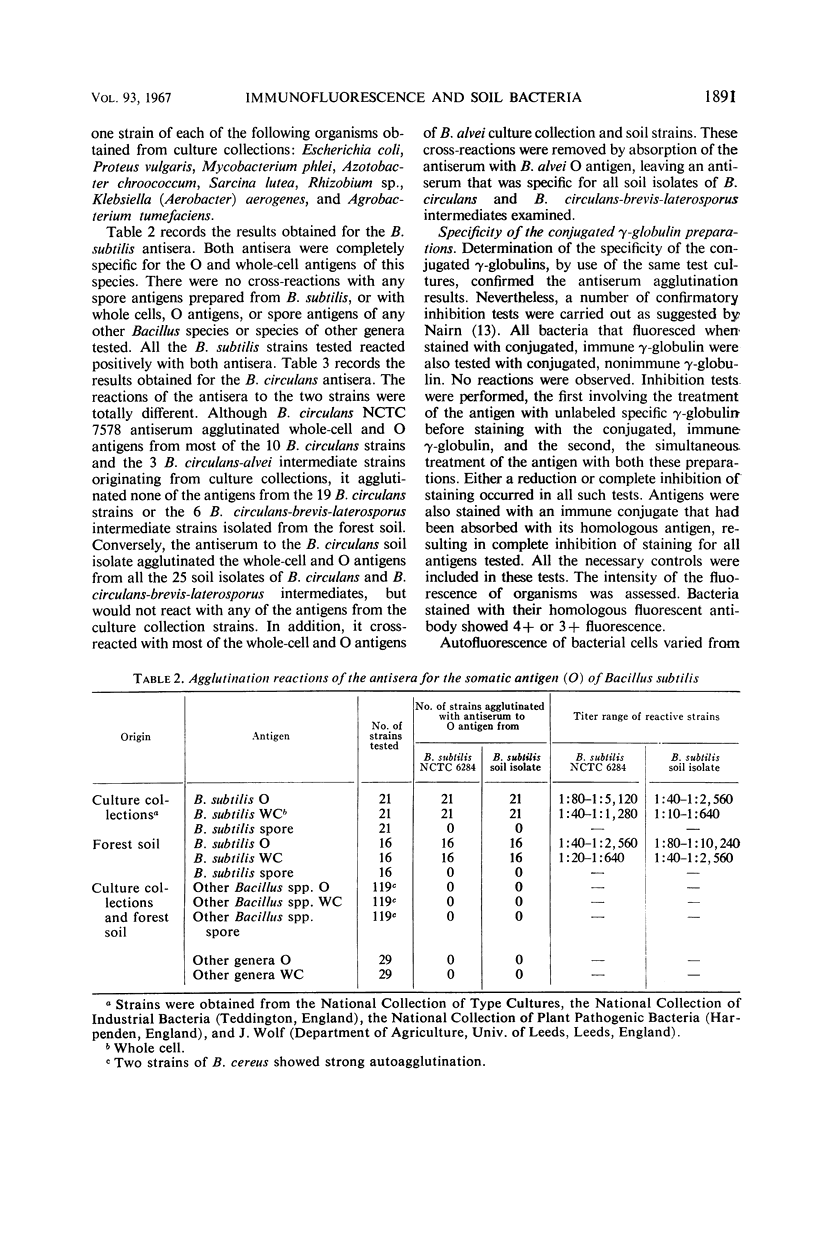

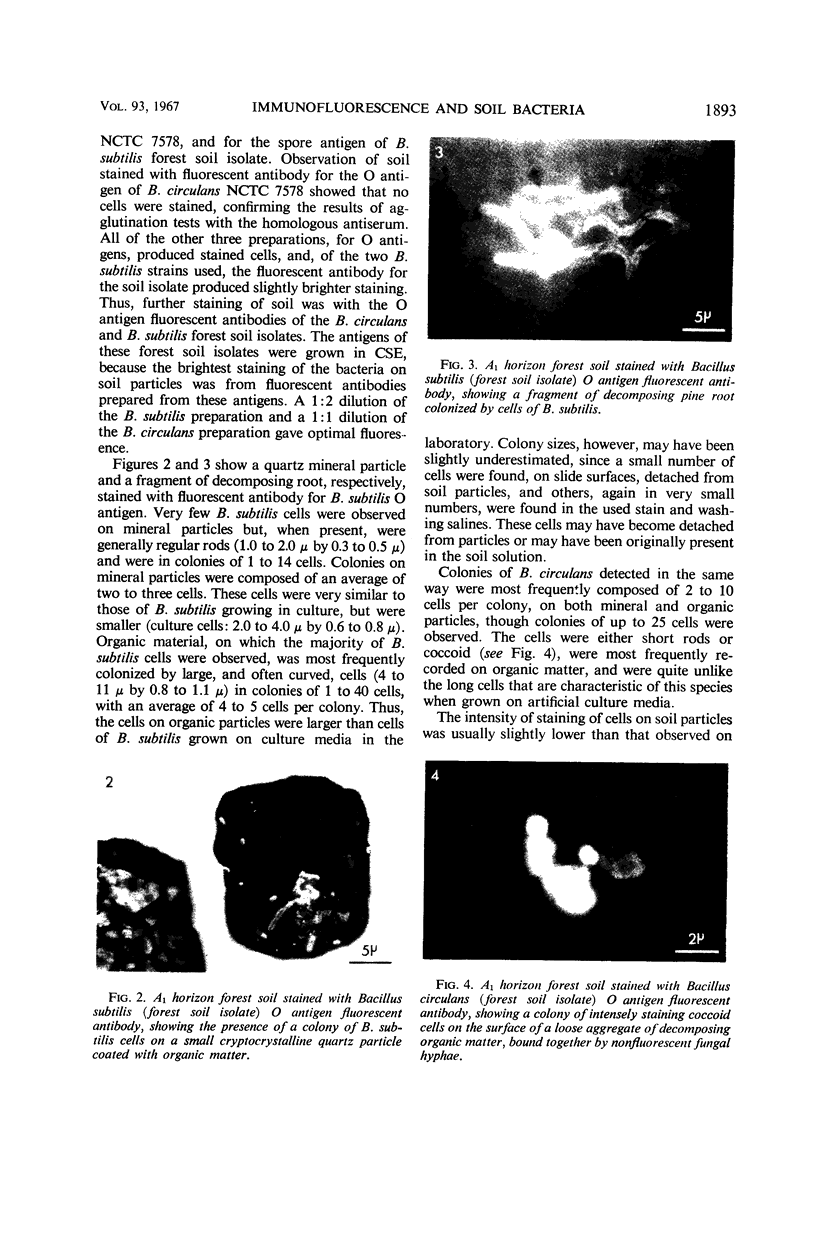
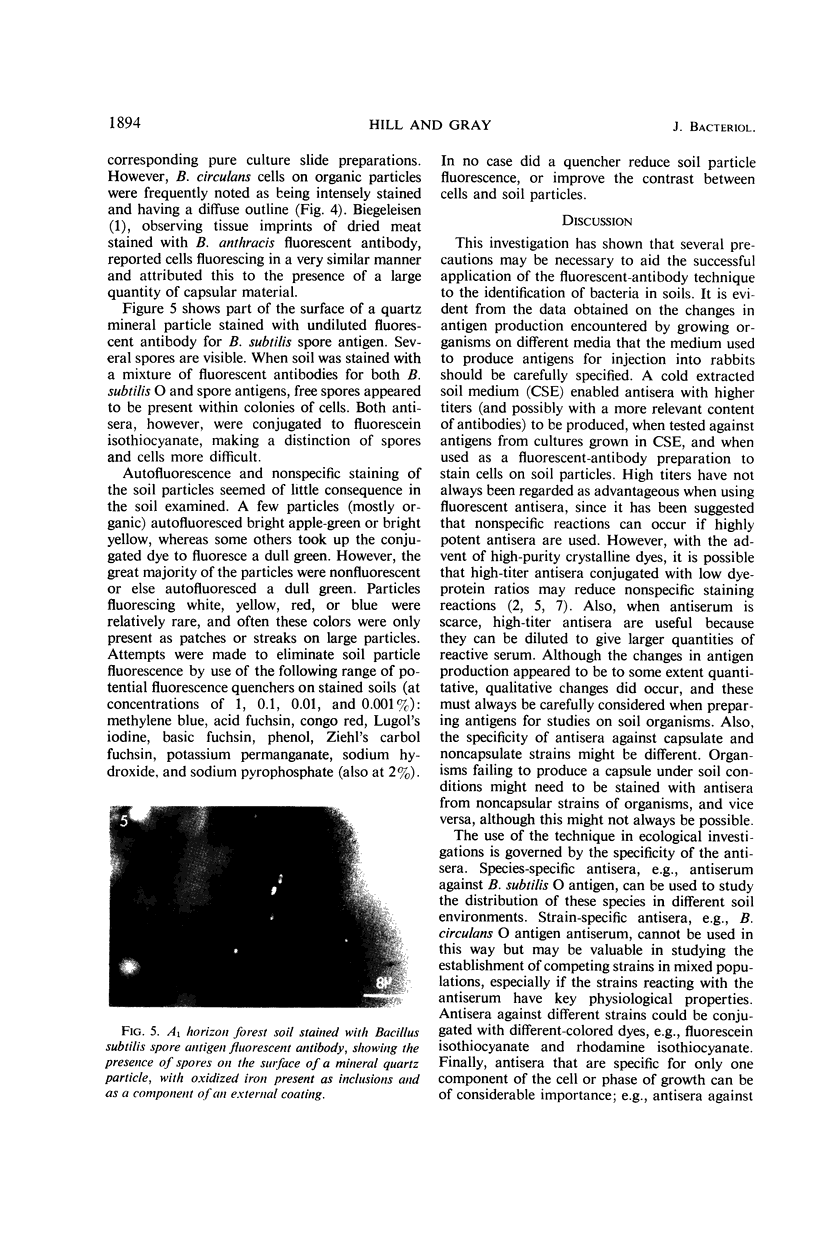
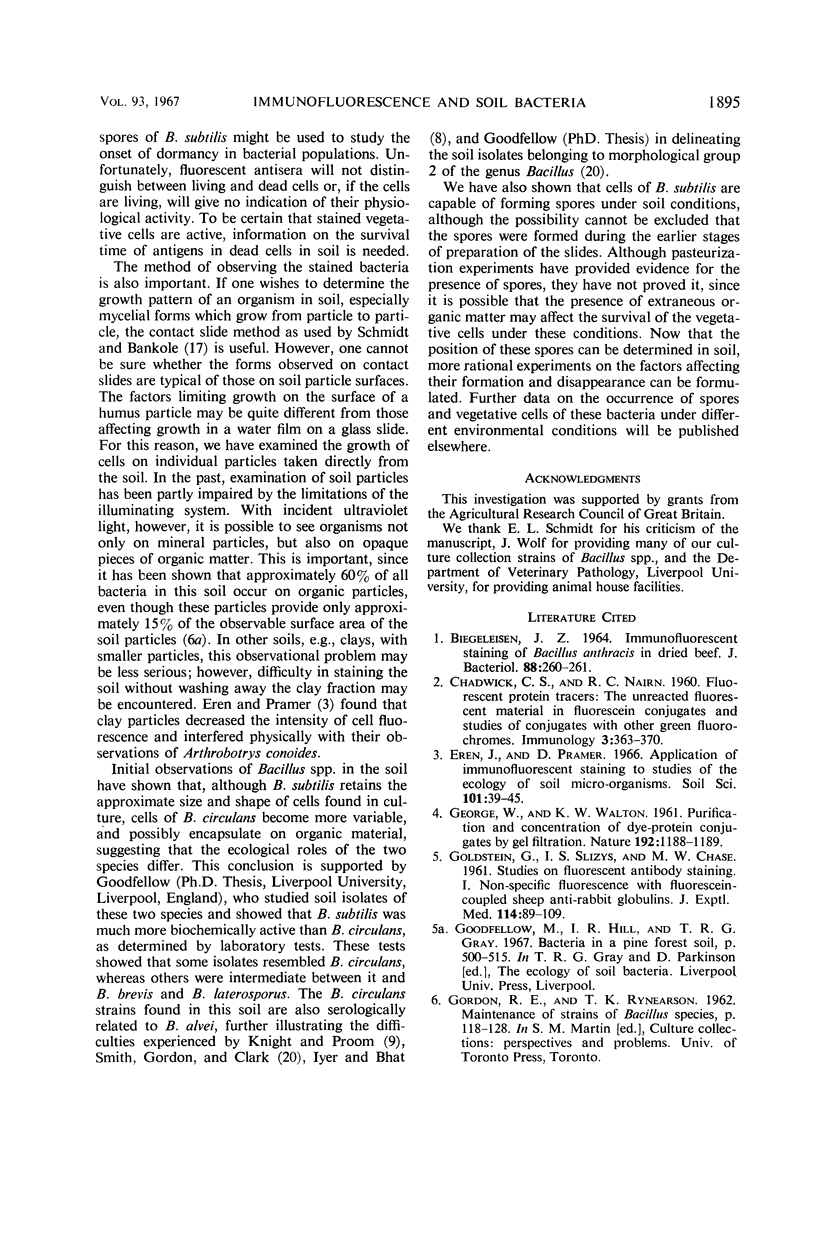
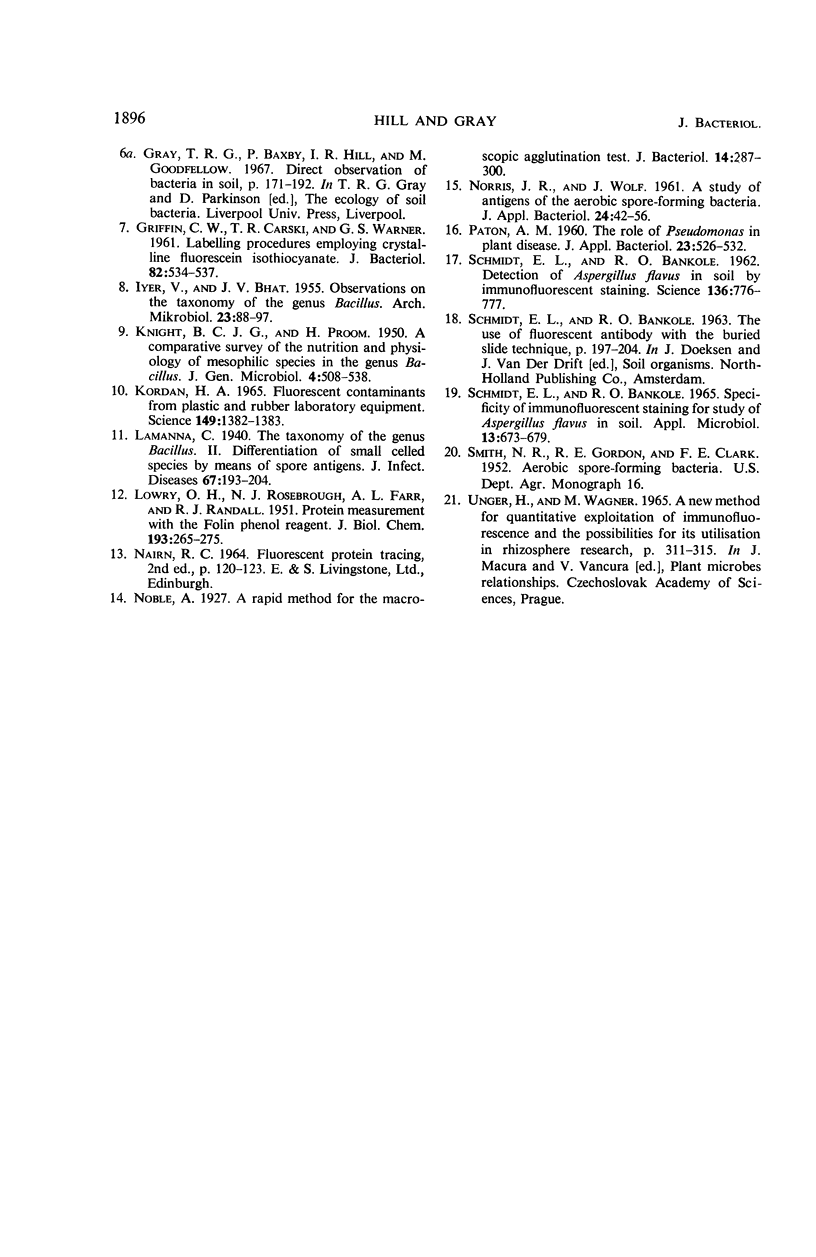
Images in this article
Selected References
These references are in PubMed. This may not be the complete list of references from this article.
- BIEGELEISEN J. Z., Jr IMMUNOFLUORESCENT STAINING OF BACILLUS ANTHRACIS IN DRIED BEEF. J Bacteriol. 1964 Jul;88:260–261. doi: 10.1128/jb.88.1.260-261.1964. [DOI] [PMC free article] [PubMed] [Google Scholar]
- CHADWICK C. S., NAIRN R. C. Fluorescent protein tracers: the unreacted fluorescent material in fluorescein conjugates and studies of conjugates with other green fluorochromes. Immunology. 1960 Oct;3:363–370. [PMC free article] [PubMed] [Google Scholar]
- GRIFFIN C. W., CARSKI T. R., WARNER G. S. Labeling procedures employing crystalline fluorescein isothiocyanate. J Bacteriol. 1961 Oct;82:534–537. doi: 10.1128/jb.82.4.534-537.1961. [DOI] [PMC free article] [PubMed] [Google Scholar]
- IYER V., BHAT J. V. Observations on the taxonomy of the genus Bacillus. Arch Mikrobiol. 1955;23(1):88–97. doi: 10.1007/BF00446687. [DOI] [PubMed] [Google Scholar]
- KNIGHT B. C. J. G., PROOM H. A comparative survey of the nutrition and physiology of mesophilic species in the genus Bacillus. J Gen Microbiol. 1950 Sep;4(3):508–538. doi: 10.1099/00221287-4-3-508. [DOI] [PubMed] [Google Scholar]
- LOWRY O. H., ROSEBROUGH N. J., FARR A. L., RANDALL R. J. Protein measurement with the Folin phenol reagent. J Biol Chem. 1951 Nov;193(1):265–275. [PubMed] [Google Scholar]
- Schmidt E. L., Bankole R. O. Specificity of immunofluorescent staining for study of Aspergillus flavus in soil. Appl Microbiol. 1965 Sep;13(5):673–679. doi: 10.1128/am.13.5.673-679.1965. [DOI] [PMC free article] [PubMed] [Google Scholar]






